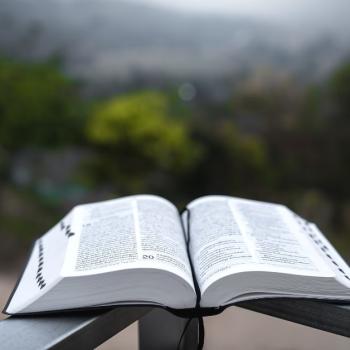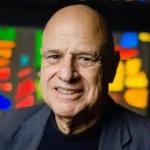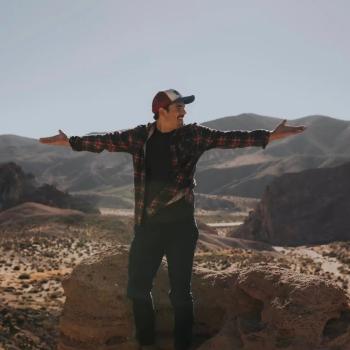Editors' Note: This article is part of the Public Square 2014 Summer Series: Conversations on Religious Trends. Read other perspectives from the Spirituality community here.
There's a parable by Franz Kafka about a man who is determined to enter the door of truth. He's told that it opens once every fifty years. He's told that it will open in a few days. But as he's waiting, he gets more and more tired, and finally falls asleep. At just that moment, the door opens.
That's a story for spiritual pessimists. It arose from a Western esoteric vision that saw spiritual awakening as a possibility so remote and difficult to attain that only the most dedicated and fortunate could experience it.
But in our time, a different story is at play. What has been esoteric and hidden has become—at least in certain circles—available and even something we take for granted. A few weeks ago, I asked a class I was teaching how many people had had an experience of awakening. Over thirty people out of nearly fifty in the room raised their hands. One of them told a story that made us weep.
Here's her story. She is a journalist who travels to war zones and tries to tell the stories of ordinary people and their plight. One day, she found herself in the midst of shelling in a small town in Syria. The town had been leveled. Bodies lay in the deserted streets. The stench was horrific. As the young woman stood, overwhelmed by the sight of all this death and despair, something shifted. Her vision opened. She saw the town, the bodies, the air itself transfigured, blazing with golden light.
Unaccountably, in the midst of horror, she had passed through the gap between the worlds and seen the light that blazes in the heart of matter.
Of course, this is an extraordinary and unique experience. Yet I've heard similar accounts from several people. Every awakening is extraordinary, whether it happens on a battlefield, in a meditation retreat, or in a supermarket. And there are more and more of them going on around us. Maybe it's a single moment of illumination, a recognition of a subtle presence that unites everything within your range of vision, or a sudden falling away of thoughts to reveal the luminosity within the mind. The awakening may last only a minute or two, but once you've seen the illusion of separation crack for even a minute, it is never so firm again.
It seems paradoxical that, as the world becomes darker and more dangerous, the veils around the heart should become thinner. I hear many explanations for this, from sunstorms to cosmic hurricanes to the natural force of evolution and the power of the internet to spread the best as well as the worst. One thing I do know: when I began my own spiritual journey, forty years ago, to be a meditator or a seeker was to live on the fringes. We literally stood at the frothy edge of credibility. But now, yoga is mainstream and mindfulness meditation is taught by insurance companies.
Most of the Millenials I know have some sort of spiritual practice. My friend's nephew spent his summer vacation from Dartmouth studying shamanism. High school girls practice yoga and do weeklong spiritual retreats. An eighteen-year-old I know, a veteran of several vision quests, told his mother, "Maybe you see God just for a minute, but the experience stays with you your whole life." Somehow, the faint stirrings of non-sectarian, universalist Spirit that began to come West with the Transcendentalists and the pioneers of yoga and Buddhism mingled with the mystical strains of Christian and Jewish thought and created a field that can be shared by millions of people who have no clue about their ancient origins.
The brilliant and edgy scientist Rupert Sheldrake writes about the morphic field, the shared space of consciousness through which cutting edge information travels. One of his favorite anecdotes concerns the monkeys on a remote Pacific island. One day, a little monkey took a yam to the ocean and washed it before she ate it. This had never been done before. A few years later, all the monkeys were washing their yams before eating them. Sheldrake tells us that new ways of seeing and doing things start with one person. At a certain point—a "tipping point," according to journalist Malcolm Gladwell—the new viewpoint or behavior goes viral. It begins to grow exponentially.
We see this with cultural fashions like hip-hop and post-modern irony. We are seeing it now with spiritual unfoldment. Consciousness has a natural tendency to morph, to transform. One aspect of this is played out in the force called entropy, and in the devolutionary tendency that plays out in the growing cycles of war and violence around the world. Another aspect, however, is the tendency to evolve—to widen our capacities for empathy, awareness, and love. And it seems that our capacity for evolving may be powered by the same energy that causes destruction and violence. There is, after all, only one consciousness. So why wouldn't it be that the very difficulties and darkness of our time could also contain the force that propels us to deeper awakenings?





